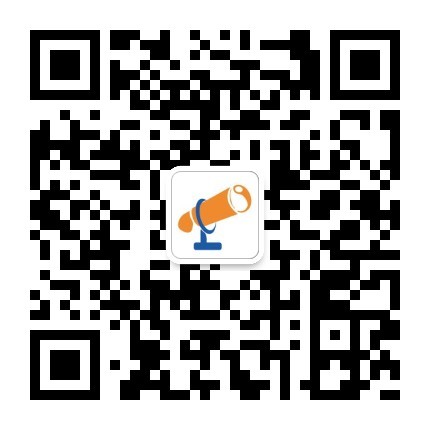Academic report“Network Analysis in the Field of Population Aging Based on Web of Science” published
Release Date: 2022-04-30Views:
We are pleased to announce the release of a new academic report on the Network Analysis in the Field of Population Aging. The results of the analysis in the report were all shared with WHO Western Pacific Regional Office. This research report contains the results of our research conducted in 2020 based on the WHO's five objectives for healthy aging . Our team consists of 5 core members. They are Hanqing Ding、Nian Liu、Yik Chan Chin 、Jing Zhu、Ke Li. All members hope that our report will help the public better understand the research status on healthy aging.
Here are the introduction、methodology and conclusion of the report.
INTRODUCTION
Population aging is becoming a major development trend globally. In the Western Pacific Region (WPR), the population aging phenomenon is especially prominent. According to United Nations (2019a; 2019b), there are more than 700 million older people aged 65 and over worldwide, of which 240 million reside in the Western Pacific Region, and this number may double by 2050 (United Nations, 2019b). Simultaneously, the Region is also experiencing a deepening aging population, with the number of people aged 75 and over proliferating. At present, the Region's population of people aged 75 and over stands at approximately 84 million and is expected to triple by 2050 (United Nations, 2019b).
Under the circumstances, World Health Organization (WHO) issued the Regional Action Plan on Healthy Ageing (RAP), which aims to support all Member States in improving the health and well-being of the aged population in the Region to thrive and contribute to society. RAP outlines five objectives for achieving the vision of healthy aging in the WPR. They can be broadly categorized as objectives to enable social return (Objective 1), objectives to support healthy ageing (Objectives 2–4), and objectives to enhance research, monitoring and evaluation (Objective 5).
Under the guidance of RAP, in order to master the research status of population aging in WPR, the report conducts network analysis of relevant academic literature in compliance with the five objectives, including influential researchers and research institutions, discipline fields involved in this research field, intellectual base and frontier of the research and the crucial literature in the research, which aims to comprehensively describe the overview of the academic field of relevant researches.
METHODOLOGY
The database, Web of Science (WoS), was selected with the help of an information specialist as relevant for contributions in the field of sciences, social sciences, arts and humanities. It includes multiple sub-databases: Science Citation Index Expanded, Social Sciences Citation Index, Arts & Humanities Citation Index, Conference Proceedings Citation Index—Science, Conference Proceedings Citation Index—Social Science & Humanities, Emerging Sources Citation Index, Current Chemical Reactions and Index Chemicus.
2. Materials Related to Each Objective
To identify the relevant papers for network analysis, the analysts used terms related to RAP’s each objective to search electronic databases. RAP’s five objectives are as below:
Objective 1: Transforming societies as a whole to promote healthy ageing, based on understanding the implications of population ageing;
Objective 2: Transforming health systems to address each individual’s lifelong health needs by providing necessary health and non-health services in a coordinated way;
Objective 3: Providing community-based integrated care for older adults tailored to individual needs;
Objective 4: Fostering technological and social innovation to promote healthy ageing
Objective 5: Strengthening monitoring and surveillance systems and research on older adults to inform programmes, services and policies.
(World Health Organization Regional Office for the Western Pacific, 2020)
The search string includes three components, including
Population terms related to ageing, such as aging and older people;
Terms related to RAP’s each objective;
37 countries and areas of the WHO WPR.
According to the keywords provided by WHO, the final search string as follows:
Objective 1: (TS="“aging”" OR TS="“ageing”" OR TS="“older" people” OR TS="“older" adults” OR TS="“older" persons” OR TS="“older" population” OR TS="“seniors”" OR TS="“senior" citizens” OR TS="“elderly”" OR TS="“elders”" OR TS="“the" aged people”) AND (TS="“ageism”" OR TS="“age" discrimination” OR TS="“employment”" OR TS="“inclusion”" OR (TS="“age-friendly”" AND TS="“transportation”)" OR TS="“age-friendly" housing” OR (TS="“age-friendly”" AND TS="“outdoor" space” AND TS="“building*”)" OR TS="“social" participation” OR (TS="“communication”" AND TS="“information”))" AND (TS="“American" Samoa” OR TS="“New" Caledonia” OR TS="“Australia”" OR TS="“New" Zealand” OR TS="“Brunei" Darussalam” OR TS="“Niue”" OR TS="“Cambodia”" OR TS="“Northern" Mariana Islands” OR TS="“China”" OR TS="“Palau”" OR TS="“Cook" Islands” OR TS="“Papua" New Guinea” OR TS="“Fiji”" OR TS="“Philippines”" OR TS="“French" Polynesia” OR TS="“Pitcairn" Island” OR TS="“Guam”" OR TS="“Republic" of Korea” OR TS="“Hong" Kong” OR TS="“Samoa”" OR TS="“Japan”" OR TS="“Singapore”" OR TS="“Kiribati”" OR TS="“Solomon" Islands” OR TS="“Lao" People’s Democratic Republic” OR TS="“Tokelau”" OR TS="“Macao”" OR TS="“Tonga”" OR TS="“Malaysia”" OR TS="“Tuvalu”" OR TS="“Marshall" Islands” OR TS="“Vanuatu”" OR TS="“Micronesia”" OR TS="“Viet" Nam” OR TS="“Mongolia”" OR TS="“Wallis" and Futuna” OR TS="“Nauru”);
Objective 2: (TS="“aging”" OR TS="“ageing”" OR TS="“older" people” OR TS="“older" adults” OR TS="“older" persons” OR TS="“older" population” OR TS="“seniors”" OR TS="“senior" citizens” OR TS="“elderly”" OR TS="“elders”" OR TS="“the" aged people”) AND (TS="“health" system*” OR TS="“integrated" care” OR TS="“long" term care” OR TS="“primary" health care” OR TS="“palliative" care” OR TS="“oral" health” OR TS="“dental" health” OR TS="“self" care” OR TS="“self-care”" OR TS="“health" service*” OR TS="“curative" services” OR TS="“preventive" services” OR TS="“social" services” OR TS="“welfare" services”) AND (TS="“American" Samoa” OR TS="“New" Caledonia” OR TS="“Australia”" OR TS="“New" Zealand” OR TS="“Brunei" Darussalam” OR TS="“Niue”" OR TS="“Cambodia”" OR TS="“Northern" Mariana Islands” OR TS="“China”" OR TS="“Palau”" OR TS="“Cook" Islands” OR TS="“Papua" New Guinea” OR TS="“Fiji”" OR TS="“Philippines”" OR TS="“French" Polynesia” OR TS="“Pitcairn" Island” OR TS="“Guam”" OR TS="“Republic" of Korea” OR TS="“Hong" Kong” OR TS="“Samoa”" OR TS="“Japan”" OR TS="“Singapore”" OR TS="“Kiribati”" OR TS="“Solomon" Islands” OR TS="“Lao" People’s Democratic Republic” OR TS="“Tokelau”" OR TS="“Macao”" OR TS="“Tonga”" OR TS="“Malaysia”" OR TS="“Tuvalu”" OR TS="“Marshall" Islands” OR TS="“Vanuatu”" OR TS="“Micronesia”" OR TS="“Viet" Nam” OR TS="“Mongolia”" OR TS="“Wallis" and Futuna” OR TS="“Nauru”);
Objective 3: (TS="“aging”" OR TS="“ageing”" OR TS="“older" people” OR TS="“older" adults” OR TS="“older" persons” OR TS="“older" population” OR TS="“seniors”" OR TS="“senior" citizens” OR TS="“elderly”" OR TS="“elders”" OR TS="“the" aged people”) AND (TS="“community-based" care” OR TS="“person-centred" care” OR TS="“person-centered" care” OR TS="“social" prescribing” OR TS="“link" worker*” OR TS="“community" health worker*” OR TS="“chronic" disease* management” OR TS="“ageing" in place” OR TS="“aging" in place” OR TS="“home" care” OR TS="“day" care” OR TS="“residential" care” OR TS="“community" participation” OR TS="“social" isolation” OR TS="“loneliness”" OR TS="“mental" health”) AND (TS="“American" Samoa” OR TS="“New" Caledonia” OR TS="“Australia”" OR TS="“New" Zealand” OR TS="“Brunei" Darussalam” OR TS="“Niue”" OR TS="“Cambodia”" OR TS="“Northern" Mariana Islands” OR TS="“China”" OR TS="“Palau”" OR TS="“Cook" Islands” OR TS="“Papua" New Guinea” OR TS="“Fiji”" OR TS="“Philippines”" OR TS="“French" Polynesia” OR TS="“Pitcairn" Island” OR TS="“Guam”" OR TS="“Republic" of Korea” OR TS="“Hong" Kong” OR TS="“Samoa”" OR TS="“Japan”" OR TS="“Singapore”" OR TS="“Kiribati”" OR TS="“Solomon" Islands” OR TS="“Lao" People's Democratic Republic” OR TS="“Tokelau”" OR TS="“Macao”" OR TS="“Tonga”" OR TS="“Malaysia”" OR TS="“Tuvalu”" OR TS="“Marshall" Islands” OR TS="“Vanuatu”" OR TS="“Micronesia”" OR TS="“Viet" Nam” OR TS="“Mongolia”" OR TS="“Wallis" and Futuna” OR TS="“Nauru”);
Objective 4: (TS="“aging”" OR TS="“ageing”" OR TS="“older" people” OR TS="“older" adults” OR TS="“older" persons” OR TS="“older" population” OR TS="“seniors”" OR TS="“senior" citizens” OR TS="”elderly”" OR TS="”elders”" OR TS="”the" aged people”) AND (TS="”digital" health” OR TS="“eHealth”" OR TS="“digital" medicine” OR TS= “telemedicine” OR TS="“assistive" technology” OR TS="“tablets”" OR TS="“computers”" OR TS="“laptops”" OR TS="“smartphones”" OR TS="“internet" of things” OR TS="“IoT”" OR TS="“wearable”" OR TS="“social" media” OR TS="“ecommerce”" OR TS="“metaverse”" OR TS="“sensors”" OR TS="“robots”" OR TS="“robotics”" OR TS="“artificial" intelligence” OR TS="“computer" vision” OR TS="“natural" language processing” OR TS="“big" data” OR TS="“analytics”" OR TS="“predictive" analytics” OR TS="“apps”" OR TS="“application”" OR TS="“smartapp”" OR TS="“smartphone" apps” OR TS="“living" labs” OR TS="“co-creation”" OR TS="“co-creating”" OR TS="“human-centered" design” OR TS="“human" centred design” OR TS="“design" thinking” OR TS="“gamification”" OR TS="“gamified”" OR TS="“serious" games” OR TS="“virtual" reality” OR TS="“augmented" reality” OR TS="“information" and communication technology” OR TS="“ICT”" OR TS="“innovation”" OR TS="“monitoring" device” OR TS="“entrepreneurship”" OR TS="“50" plus” OR TS="“social" enterprise” OR TS="“volunteer”" OR TS="“self-help" club” OR TS="“silver" market”) AND (TS="“American" Samoa” OR TS="“New" Caledonia” OR TS="“Australia”" OR TS="“New" Zealand” OR TS="“Brunei" Darussalam” OR TS="“Niue”" OR TS="“Cambodia”" OR TS="“Northern" Mariana Islands” OR TS="“China”" OR TS="“Palau”" OR TS="“Cook" Islands” OR TS="“Papua" New Guinea” OR TS="“Fiji”" OR TS="“Philippines”" OR TS="“French" Polynesia” OR TS="“Pitcairn" Island” OR TS="“Guam”" OR TS="“Republic" of Korea” OR TS="“Hong" Kong” OR TS="“Samoa”" OR TS="“Japan”" OR TS="“Singapore”" OR TS="“Kiribati”" OR TS="“Solomon" Islands” OR TS="“Lao" People's Democratic Republic” OR TS="“Tokelau”" OR TS="“Macao”" OR TS="“Tonga”" OR TS="“Malaysia”" OR TS="“Tuvalu”" OR TS="“Marshall" Islands” OR TS="“Vanuatu”" OR TS="“Micronesia”" OR TS="“Viet" Nam” OR TS="“Mongolia”" OR TS="“Wallis" and Futuna” OR TS="“Nauru”);
Objective 5: (TS="“aging”" OR TS="“ageing”" OR TS="“older" people” OR TS="“older" adults” OR TS="“older" persons” OR TS="“older" population” OR TS="“seniors”" OR TS="“senior" citizens” OR TS="“elderly”" OR TS="“elders”" OR TS="“the" aged people”) AND (TS="“national" survey” OR TS="“longitudinal" survey” OR TS="“longitudinal" data” OR TS="“research" agenda” OR TS="“ageing" indicator*” OR TS="“health" indicator*” OR (TS="“cost-effective”" AND TS="”intervention*”)" OR (TS="“intervention”" AND TS="”sustainability*”))" AND (TS="“American" Samoa” OR TS="“New" Caledonia” OR TS="“Australia”" OR TS="“New" Zealand” OR TS="“Brunei" Darussalam” OR TS="“Niue”" OR TS="“Cambodia”" OR TS="“Northern" Mariana Islands” OR TS="“China”" OR TS="“Palau”" OR TS="“Cook" Islands” OR TS="“Papua" New Guinea” OR TS="“Fiji”" OR TS="“Philippines”" OR TS="“French" Polynesia” OR TS="“Pitcairn" Island” OR TS="“Guam”" OR TS="“Republic" of Korea” OR TS="“Hong" Kong” OR TS="“Samoa”" OR TS="“Japan”" OR TS="“Singapore”" OR TS="“Kiribati”" OR TS="“Solomon" Islands” OR TS="“Lao" People’s Democratic Republic” OR TS="“Tokelau”" OR TS="“Macao”" OR TS="“Tonga”" OR TS="“Malaysia”" OR TS="“Tuvalu”" OR TS="“Marshall" Islands” OR TS="“Vanuatu”" OR TS="“Micronesia”" OR TS="“Viet" Nam” OR TS="“Mongolia”" OR TS="“Wallis" and Futuna” OR TS="“Nauru”).
The search for Objective 1 was carried out on 23 November 2021, resulting in 1,817 publications. The search for Objective 2 was carried out on 30 November 2021, resulting in 3,633 publications. The search for Objective 3 was carried out on 16 November 2021, resulting in 3,264 publications. The search for Objective 4 was carried out on 17 November 2021, resulting in 2,020 publications. The search for Objective 5 was carried out on 26 November 2021, resulting in 712 publications.
The analysts and WHO agreed on general inclusion and exclusion criteria, which helped define the relevant studies for the screening based on titles and abstracts. Contributions were comprised if they were published in English in peer-reviewed international journals after 1990 and were available in full text electronically. Contributes were eliminated if they were published as duplicates, reviews, and on the subjects irrelevant to RAP’s each objective. The screening process resulted in a data corpus of 1,320 publications for Objective 1, 3,277 publications for Objective 2, 2,270 publications for Objective 3, 1,354 publications for Objective 4, and 628 publications for Objective 5 for further analyses.
CiteSpace 5.8.R3 was used as a tool of network analysis and data visualization. Five types of networks were analyzed, including co-author network, co-institution network, co-category network, co-keyword network, and co-citation network. Some parameters were pre-set before the formal network analysis. According to the publication date of the literature, the period between 1991 and 2021 was set as Time Slicing for Objective 1, the period between 1990 and 2021 was set as Time Slicing for Objective 2, the period between 1992 and 2021 was set as Time Slicing for Objective 3, the period between 1991 and 2021 was set as Time Slicing for Objective 4, the period between 1991 and 2021 was set as Time Slicing for Objective 5. Each year was set as one time slice except for the keyword network. In the keyword network, the time slice was set to be five years to explore the research trends across different time periods. According to different types of network analysis, five node types were selected respectively, including Author, Institution, Category, Keyword, and Reference. The top 50 nodes per slice was set as Selection Criteria.
CONCLUSION
Based on the above analysis, we find that the population ageing in the WPR has increasingly become a research hotspot in academic circles, and the number of relevant studies is also increasing year by year. The topics of population aging in the Western Pacific Region are not only concerned by researchers from the countries/areas of the Western Pacific Region, such as the People’s Republic of China and Japan, but also focused by researchers in the other countries of the Americas and Europe, such as the United States of America (USA) and the United Kingdom of Great Britain and Northern Ireland (UK).
By conducting network analysis, the researcher cooperation network, institutional cooperation network, discipline co-occurrence network, research keyword co-occurrence network and literature co-citation network of relevant academic literature based on five objectives are described. We mainly analyze the network from the overall and individual perspectives. From the angle of the overall network, we took two successive steps. Primarily, we describe the scale, density, modularity indicators of the five networks respectively and visualize them to clarify the structure of the networks. The second step is clustering the networks and finding subgroups with high homogeneity and large size and their components in each network. From the individual perspective, we identified the key nodes in each network, such as pivotal authors, crucial institutions and critical research literature, using three indicators-frequency, degree centrality and betweenness centrality to clarify the most significant individual components of the research field.
In conclusion, the population ageing in the WPR are attracting an increasing number of scholars worldwide to devote to the research field. However, there is still some space to be explored. The network analysis shows that it is relatively fragmented and lacks cross-regional and cross-disciplinary collaboration while academic research in the field is abundant. In addition, there are relatively few long-term national studies that can provide more basic data support and a broader perspective for population ageing research. It is expected that there will be an increasing number of cutting-edge, long-term and large-scale academic studies in this research field in the future, so as to contribute to a good development of healthy population ageing in the WPR.
The project received funding from World Health Organization Regional Office for the Western Pacific.
Contact
School of journalism and communication of Beijing Normal University
Xinjiekou No. 19, Haidian District, Beijing
E-mail: dinghanqing@bnu.edu.cn




 京ICP备13009620号
京ICP备13009620号